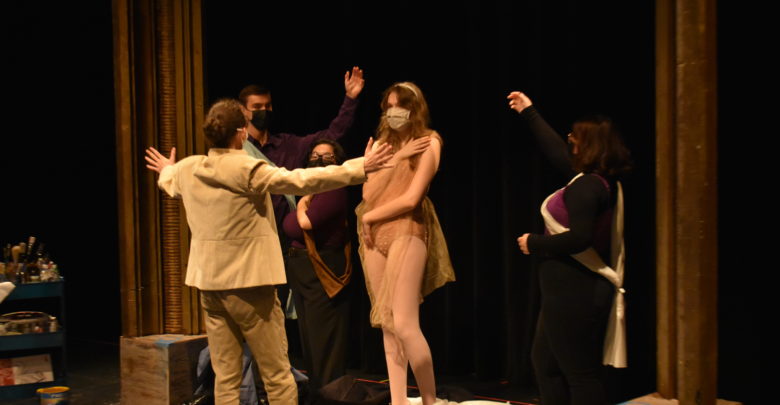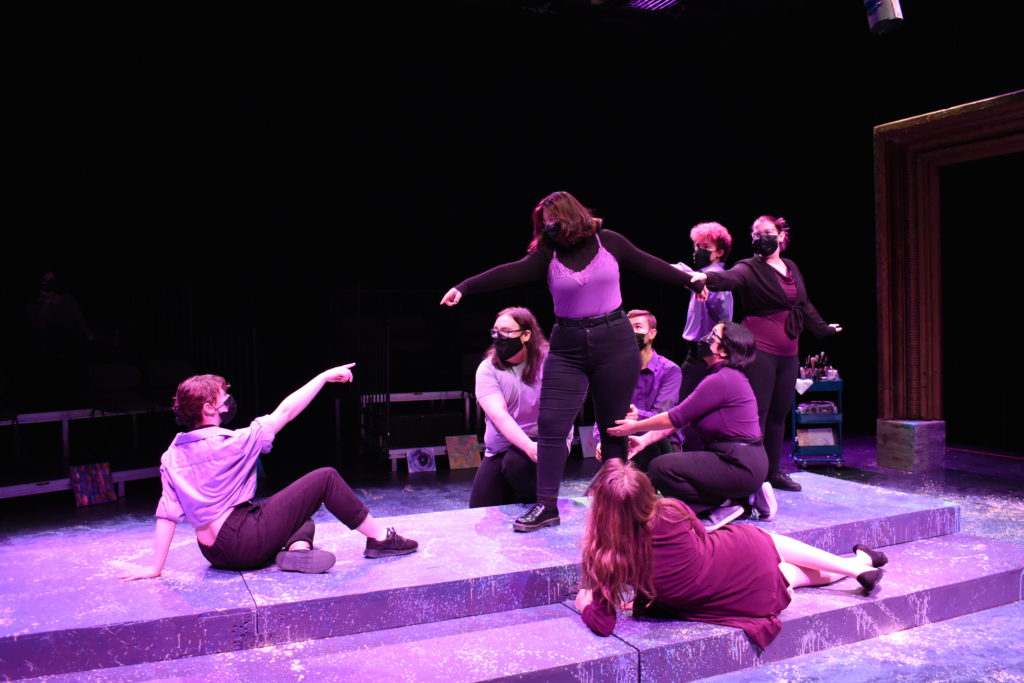Play Review: ‘Botticelli in the Fire’
Botticelli in the Fire explores the life of artist Sandro Botticelli as he paints the Birth of Venus in this queer retelling.
 Sophia Katzell
Sophia KatzellBotticelli in the Fire is a play written by Jordan Tannahil, directed by Ahmed Assaf, and presented by ABBEDAM 2021. If you are unfamiliar, ABBEDAM is a group of U of A drama students who present an annual play. In the past, they have performed Loveplay and Scary Fairy.
This year, ABBERDAM introduces the beloved artist Sandro Botticelli as he paints the Birth of Venus for the Medici family. Botticelli becomes involved in affairs of the heart, sodomy trials, and the politics of the Italian Renaissance. The play explores the queerness that surrounded artist circles during the Italian Renaissance through the experience of Botticelli and his romantic affair with his apprentice, Leonardo De Vinci. But, more than that, the play exemplifies the long-standing resilience and perseverance of the queer community.
The scene was set when two actors, who were near mirror images of one another, walked out onto the stage to tell us to turn off our cell phones. These two actors, I would come to learn, were each Botticelli.
When the two Botticellis both walked out onto the stage rocking matching tank tops and each holding a bottle of wine, I can honestly say I had no idea what to expect for this play. I had never seen a production written by Tannahil nor anything directed by Assaf, and for a brief moment, I was extremely worried. All I was thinking was: Oh no, am I going to have to write a bad review for this play?
I am very happy to report that this is not the case.
This play is the queer retelling of the Italian Renaissance that I — and any other person who knows anything about the Renaissance — needed and deserved. The direction of the play took an interesting turn, using a modern setting with phones, cars, television programs, karaoke (on top of the Millennial humour) to reinterpret the events that took place in the 15th century in Italy. Not only does the play completely accept how absolutely sexual the Renaissance was — trust me, I’m a history student so I know this stuff — but it also explores the heartbreaking reality of those who were convicted and persecuted for sodomy.
As for the set itself, I have never seen anything like it. Yes, the stage setting was nothing more than the floor in front of the audience with props being moved in and out of the scene, but the Birth of Venus painting was extraordinary. Instead of having a reproduction of the painting (which is what I, and probably many others, expected), the production used actual actors within a giant frame. The concept of using moveable actors inside the frame added a new depth to the play that was completely unexpected. It allowed for the flexibility for the painting to be morphed and repainted on-stage, without the need for imagination, making the painting its own active participant within the play itself.

Botticelli in the Fire is more than its queerness and joking attitude of this generation. This play is about acceptance, grief, fear, and love. Although the play cannot be described as “historically accurate,” the play is able to do what many historians still struggle to do when studying gay history: the play gave a face and personality, not only to Botticelli and Leonardo De Vinci, but through them the other artists that were tortured and persecuted during this time — all while appealing to a greater audience than historians can imagine.
Now excuse me while I go and look up fanfiction for Botticelli and De Vinci.




